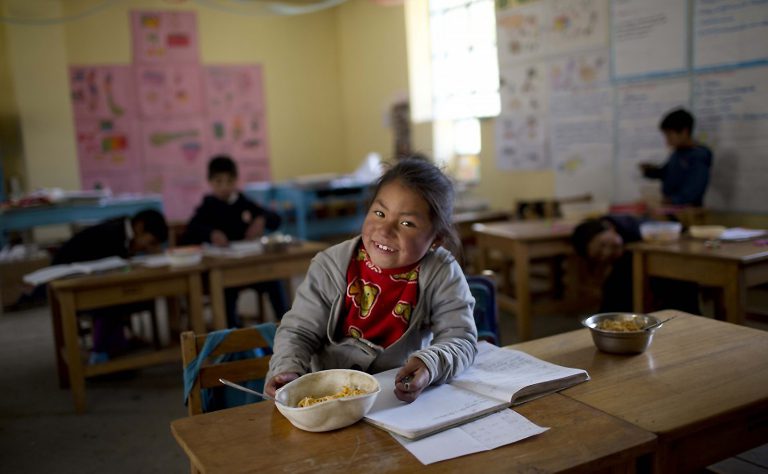
One million primary students in Peru speak a language other than Spanish in the home. On October 21, leaders of Peru’s Ministry of Education invited representatives of 54 indigenous groups to comment on a new national policy that would guarantee these students an education in their mother tongue.
The policy is the product of three years of work by the Dirección de Educación Bilingüe Intercultural y Rural (DIGEIBIR), which was formed in 2012.
“For the first time, Peru will have a plan for bilingual education. A plan informed and supported by the people who it serves,” said Flavio Figallo, Peru’s Viceminister of Education, in a public announcement.
The new plan sets the ambitious goal that students will finish primary school fluent in Spanish and their mother tongue.
If it is successful, 90 percent of indigenous students in kindergarten and primary school will receive a bilingual education and 90 percent of teachers in bilingual schools will speak and write an indigenous language by 2021, up from 52 percent and 60 percent, respectively.
“Spanishization”
For two centuries, Spanish-only education was the official policy in Peru. In 1780, Spain’s Carlos III banned the use of Quechua – the language of the conquered Inca Empire – in schools. After independence, leaders kept the policy of “spanishization” in place, leading to experiences like this one, reported by Hilario Diáz, now a bilingual educator in the Peruvian Amazon,
“The teacher asked a question, and I knew the answer in my language, but lacked the words to say it in Spanish. For failing to respond quickly, I was punished, but little by little I learned.”
Remarkably, forty-six indigenous languages survived – four in the Andes Mountains, and 42 in the Amazon. Variants of Quechua are still spoken by 4.5 million Peruvians.
Although Peru recognized the right to a bilingual education in its 1979 constitution, progress has been halting. A lack of government coordination and funding left the bilingual education movement reliant on NGOs to run a few regional pilot programs.
A 1989 study of one such program in Quechua communities in Puno – a city in Southern Peru – found that many parents viewed bilingual education as a hostile imposition – a policy they feared would leave their children at a disadvantage in a Spanish-speaking country.
“Parents…for their own experience of cultural discrimination, preferred that their children learn in Spanish and leave behind their mother tongue,” said DIGEIBIR director Elena Burga in a 2012 interview with UNICEF.
A voluntary process?
In more recent comments, Burga has stressed that learning the indigenous language should be voluntary. “It’s best to educate people that just like someone might want to learn English, they can learn a native language.”
The initial reception from indigenous community leaders has been been positive. Roberto López, who heads the Campesino Confederation of Peru, called the meeting “a historic feat.”
Following this period of public comment, the plan will be revised with input from indigenous leaders and the social sector.
This article first appeared on Latin Correspondent. Image from Associated Press.
Liked this? Then you’ll love these!…
Learn English or Fail Your Degree – Is This The Future of Education for Cuban Students?
British Vs American English: How to Understand the Difference







